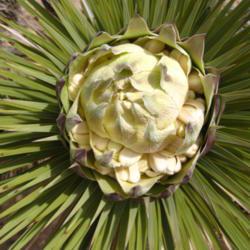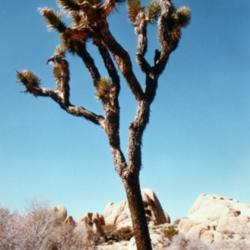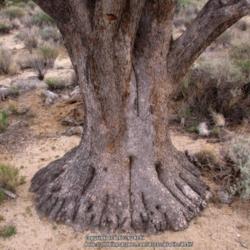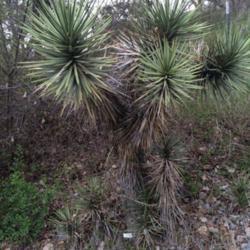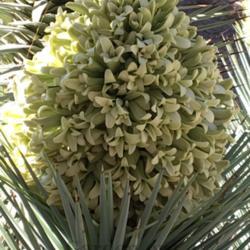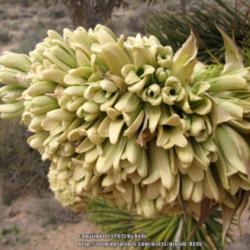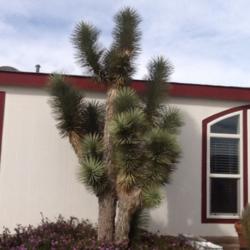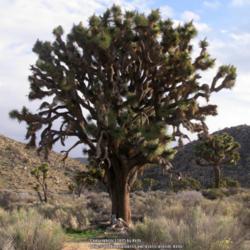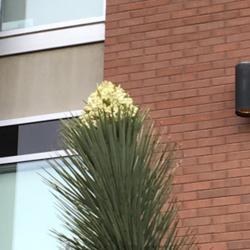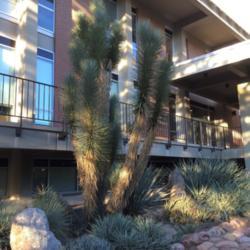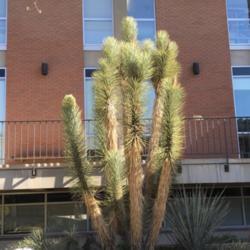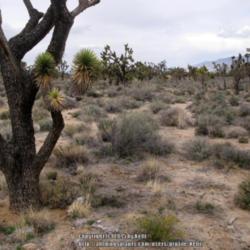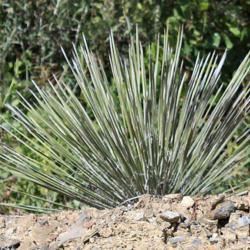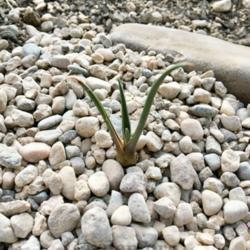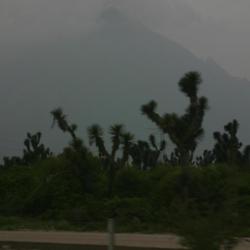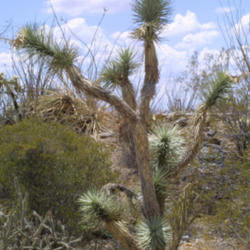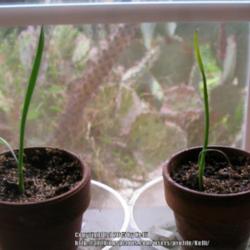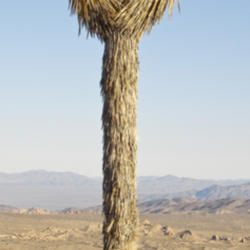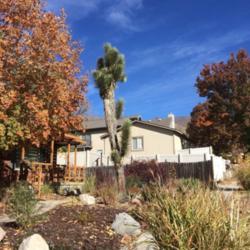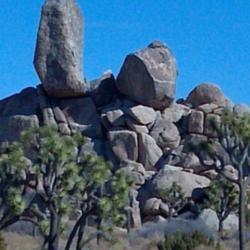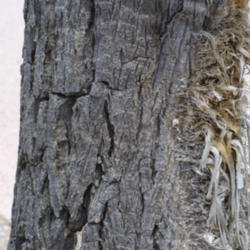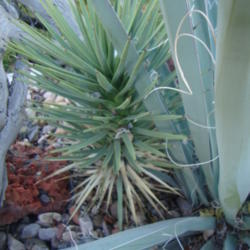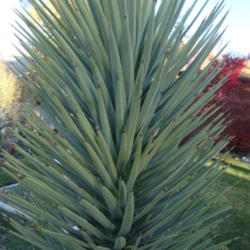Posted by
Baja_Costero (Baja California - Zone 11b) on Aug 12, 2019 9:31 PM concerning plant:
Large, long-lived tree to 30-50 feet tall (in rare cases even taller) from the Mojave Desert. The Joshua tree ranges from SE California into southern Nevada and western Arizona, at altitudes from 1500 to 6500 feet. The base of the trunk may be up to 5 feet wide on older plants, the spread of the canopy up to 30 feet.
Leaves are persistent, relatively short for a yucca (6-14 inches; thus the name) and gray-green or light blue-green, with a sharp tip. Branches, from a few to many, may emerge high up or at the base; a few populations produce branches from rhizomes. The branches often bend at weird angles. These bends, and branching itself, tend to be associated with flowering events. Cream to greenish white flowers appear at the growth points. They are mostly closed, with a small mouth for pollinators to enter, and they exude an unpleasant odor. Pollinated by a yucca moth, Tegeticula synthetica. Fruit is large and spongy.
This plant appears in cultivation in the Mojave, Sonoran, and Chihuahuan Deserts, over a relatively wide range, in part because of its cold tolerance (to 0°F and sometimes even lower). It is propagated from seed and relatively slow growing (nowhere near its potential full size in your lifetime). It can be distinguished from several other large tree yuccas based on the color of its leaves (which are pale blue-green, not dark green).
The Joshua Tree National Monument was created in 1936 by Franklin D. Roosevelt to protect this species; the core of this area was turned into a national park in 1994. This park is located just north of the Salton Sea in southern California. Before efforts toward conservation, Joshua trees were cut down and the wood was used to make paper and other products. They are now cultivated ornamentally.

